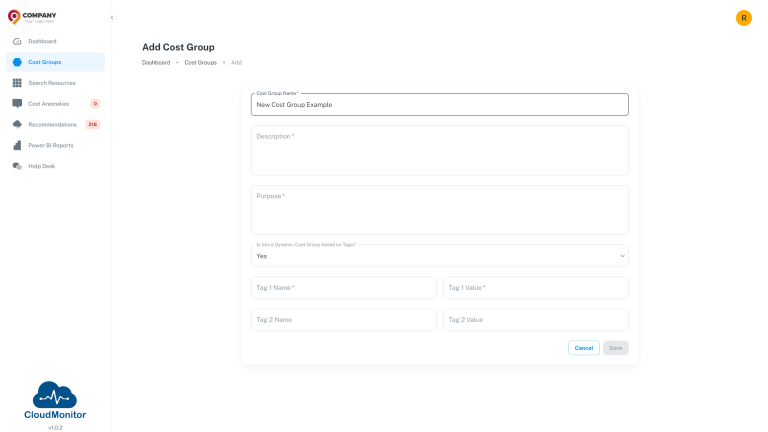Invoicing & Chargeback Capability
The importance of Invoicing & Chargeback lies in the allocation of spend accountability to the relevant departments or individuals and the seamless integration of financial data into internal reporting systems and financial management tools
To better understand how CloudMonitor can help your organization with Invoicing & Chargeback, let’s look at the following scenario: Your company has hired a project manager to oversee the development of a new software product. The project manager is responsible for managing the project timeline, coordinating with the development team, and ensuring that the project is completed on time and within budget.

Report Subscriptions
Using the Admin App you can create a Cost Group that contains only Resource groups or Resources that are used for that new project. This will ensure that all costs are properly allocated for that project and can have been integrated into all reporting systems.
Showback
Once the Project Manager has been given limited Cost Group access to your organization’s data he can now use any of CloudMonitor reports to monitor costs and stay within budget for that project.

Invoicing & Chargeback Definition
Invoicing & Chargeback Integration involves the allocation of spend accountability to the departments or individuals responsible for incurring the costs. The first step is to implement chargeback and give visibility to the teams. Once chargeback has been implemented, mature FinOps practitioners programmatically integrate that data into their internal reporting systems and financial management tools.
While Chargeback is a critical aspect of this capability, Showback is also a foundational part of any FinOps practice. Showback displays the charges by product or department but keeps the expenses in a centralized budget, while Chargeback sends expenses to a product or department P&L. Both methods are equally mature, and the choice of which to use depends on the organization’s accounting policy and preference.
Tagging and account strategy are essential to identify costs. Practitioners can assign a tag to a resource or designate a cost center that pays for resources in a specific account to determine who is responsible for the expense incurred. Additionally, another consideration in this capability is how to allocate shared organizational costs and commitment-based discounts. The centralization or allocation of these costs is dependent on consumption.
It is crucial for a centralized FinOps team to work closely with their finance partners to ensure that the decisions made in this capability, such as chargeback vs. showback, tagging and accounting strategies, and handling shared costs, integrate with the company’s IT policies and systems. The objective is to make it easy for users to be accountable for their expenses, and the best way to achieve this is by integrating with the company’s finance tools and processes.
